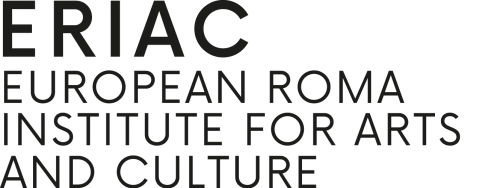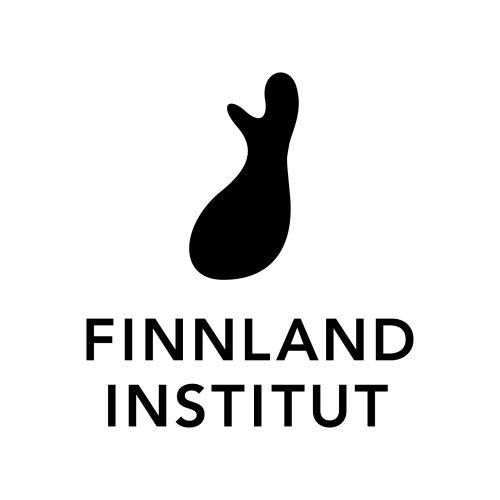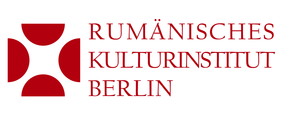HOLDING GROUND: Crafting New Paths in a Changing World | ERIAC Exhibition at the 13th Berlin Biennale
Throughout history, Roma have been cast into precarity – subject to forced migrations, systemic exclusion, and erasures that threatened both memory and material existence. And yet, within this violence, the Roma have forged worlds, mended the ruptures of history, and found refuge, often in nature. This exhibition at ERIAC engages with resilience and survival not as passive endurance. Still, as active, generative forces: the capacity to repair, to forge new pathways, and to reclaim spaces that have been denied. At a time when displacement, climate crisis, and political exclusion once again push communities to the edge, this Roma knowledge of survival, of making and remaking, of living with and within nature, becomes not only historical legacies but urgent strategies for the present.
Drawing from the thought of Achille Mbembe, who writes of “necropolitics” as the ways in which power determines who may live and who must die, this exhibition insists on the Roma refusal to be erased. Instead, it offers survival as a radical, aesthetic, and political practice. Here, resilience is not just resistance – it is the forging of new ways of being, new refuges in art, in nature, in the spaces we remake for ourselves and each other.
The collaboration between the Berlin Biennale 2025 and ERIAC emerges from a shared dedication to artistic practices that challenge erasure and amplify the voices of those historically pushed to the margins. Curators Zasha Colah and Timea Junghaus bring together intersecting perspectives that explore resilience not as a passive state, but as a transformative force—an insistence on survival through creativity, restoration, and reimagining. This exhibition is a dialogue between histories of endurance and contemporary gestures of repair, forging new solidarities across artistic, ecological, and social landscapes.
Lali Gabor
Katariina Lillqvist
Dan Turner
Ceija Stojka
Lali Gabor
Forging and mending are ancestral practices among Roma artisans, where repair is both material and ontological. Lali Gabor’s coppersmithing intervention in the public sphere reclaims an urban space not through monumentality but through the intimate scale of the handmade. His birdhouse for ERIAC extends this gesture of refuge: a shelter for migratory beings, resonant with Roma histories of perpetual movement. In addition to his birdhouse, Gabor will lend his expert hands to the city’s neglected corners—mending broken metal objects, restoring a missing lamppost door, and quietly repairing the scars of urban neglect. His work is an act of subtle defiance, a reminder that even the smallest acts of care can restore dignity to a place. As Homi Bhabha theorizes in The Location of Culture, the act of crafting—especially within dispossession—becomes a political assertion of presence, a way to remake the world in our own image.
Lajos Gabor (Lali), born in Oradea, Romania, is a master coppersmith and influential Roma artist. Trained by his father and grandfather, he honed traditional metalworking skills and expanded into carpentry and silverwork. Lali is known for blending Roma craftsmanship with contemporary art, notably through his collaboration with Sámi artist Joar Nango in “The European Everything.” His work, featured internationally, includes installations and symbolic objects. Also active in film and Romani language education, Lali embodies the creativity and cultural resilience of Roma heritage in modern Europe.
Lali Gabor`s interventions are supported by the Romanian Cultural Institute Berlin (Rumänisches Kulturinstitut Berlin)
Katariina Lillqvist
Katariina Lillqvist’s Mire Bale Kale Hin film and its puppets summon the specters of the past, narrating Roma survival across generations of exclusion and violence. The film’s engagement with puppetry—a form steeped in folk traditions and political resistance—suggests an alternative historiography, one where the Roma past is not merely endured but actively reimagined. Nature, in the film, appears as a threshold space, where survival is negotiated not through ownership but through attunement, the ability to move with the rhythms of the land.
Katariina Lillqvist, born in Finland, is a Prague-based filmmaker and pioneer of Nordic animation. Co-founder of Film Cooperative Cagliostro, her work spans animation, documentaries, and literature, spotlighting marginalized voices—especially Roma culture, women, and children. She won the Silver Bear (Berlinale, 1996), Annecy’s Special Prize (2017), and PEN Finland’s Free Speech Award (2020). Her films have screened globally, and she’s now creating a cultural center in Pyhäjoki and developing In the King’s Town, an animated series on Roma siblings in 1970s Finland and Sweden. Lillqvist’s deep engagement with Roma heritage is also reflected in her film Mire Bale Kle Hin, featured in the present exhibition, which poetically explores intergenerational memory and resistance within Roma communities.
ERIAC is thankful for the support of the Finnland-Institut Germany and FRAME Contemporary Art Finland.
Ceija Stojka
“To mend is to make something whole again, but also to alter it irreversibly.” As theorist Elizabeth Povinelli notes, survival is not merely persistence but a “biopolitical experiment” in how life can continue under duress. Ceija Stojka’s graphic works capture this fragile but indomitable persistence—her delicate renderings of weeds, wildflowers, and tenacious plants reclaiming barren ground mirror the resilience of the Roma people. These plants, often dismissed as insignificant or unwanted, are in fact survivalists, thriving in inhospitable conditions, breaking through cracks in concrete, weaving their roots through history’s ruins. Stojka’s visual language does not merely recall the traumas of the past but speaks to the quiet force of life pushing forward, entwining memory with renewal, fragility with strength.
Ceija Stojka (1933–2013) was an Austrian Romni whose life bore witness to the unspeakable and transformed it into art. A survivor of Auschwitz, Ravensbrück, and Bergen-Belsen, she broke decades of silence in her fifties, becoming one of the first Roma women to write publicly about the Holocaust. Her memoirs and artworks form a searing, poetic archive of memory—haunted landscapes, fragile flowers, and the shadows of camp barracks all rendered in her unmistakable hand. With raw lyricism, she reclaimed not only her own story, but a collective history often erased. Her work pulses with both mourning and defiance, insisting on the presence and humanity of Roma lives in a world too quick to forget. Ceija’s legacy lives on in every delicate line that dares to remember and every bloom that pushes through the rubble.
Dan Turner
Survival often unfolds in interspecies solidarities, in landscapes of refuge, in the reciprocal labor of care between human and non-human worlds. Dan Turner’s artistic interventions – both inside ERIAC and in the public space – reframe nature not as an untouched ideal but as a site of resilience, cultivated through care and rewilding. Turner´s living first aid kit points to a time when Roma were valued within rural communities for their skill and expertise, and the unique insights that they had to offer, situating them as central to Roma experience and to Roma knowledge. The plants, chosen for their deep roots, adaptability, or power, embody Roma histories of mobility and improvisation, the knowledge of how to thrive in marginal or overlooked spaces.
Dan Turner (b. 1956, Kent) is a London-based Romani artist whose work bridges tradition and contemporary life. A graduate of Central Saint Martins, his practice spans sculpture, video, painting, and text, often rooted in Romani cultural knowledge—peg-making, herbalism, and oral storytelling. His piece “Seeds of Change,” featured in ERIAC’s FUTUROMA (curated by Daniel Baker) at Venice Biennale 2019, reflects his deep commitment to community and craft. Turner’s work has been exhibited across Europe, including the 2nd Roma Biennale and the Museum of Contemporary Art Skopje, and he continues to create and teach from his base in South East London.
The European Roma Institute for Arts and Culture is a sister organization of the 13th Berlin Biennale.
The exhibition is on view from June 13, 2025 – September 15, 2025
Curator of the Roma component: Timea Junghaus, curator, art historian
Curator: Timea Junghaus
Assistant Curator: Emese Molnár
Communications: Radu Sticlea
Curatorial Intern: Roxy Toledo Munrose


